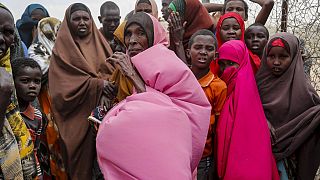Climate crisis
2023 was a record-hot year and stood out with a drying up of water flows and contributed to prolonged droughts in some places.
The World Meteorological Organization WMO released the latest “State of Global Water Resources” report on Monday (Oct. 07).
It notably covers rivers lakes, reservoirs, groundwater, soil moisture, glaciers, and the evaporation of water from land and plants.
"We had never seen such a large area around the world which was under such dry conditions. So from the 33 years of data that we have considered in this report, it was the driest year."
If southern America's renowned Amazon and Lake Titicaca faced widespread drought conditions, other places in Oceania for instance were flooded.
The WMO's chief alerted on erratic hydrological cycles.
"Water is the basis of life in this planet. But it can also be a force of destruction. One of the key findings of these report is that water becomes increasingly unpredictable, what we call an erratic hydrological cycle leading to sudden floods, severe droughts and climate change is one of the causes of these extreme behaviours."
In November 2023, at least 130 people died in the horn of Africa following heavy rains that triggered what aid agencies described as flooding seen only once every 100 years.
The WMO called for improvements in data collection and sharing to help clear up the real picture for water resources and help countries and communities take action in response.













01:22
World will have to learn to live with heatwaves, UN says
01:39
Sustainable development financing conference opens in Seville
00:56
South Africa: At least 101 dead in Eastern Cape floods as rescue efforts continue
01:35
UN and Haitian officials mark one year since Kenyan police arrived to support security efforts
01:42
Gaza residents welcome rare organized aid delivery after months of chaos and hunger
01:50
UN urges renewed political and climate action in Libya amid humanitarian and governance crises